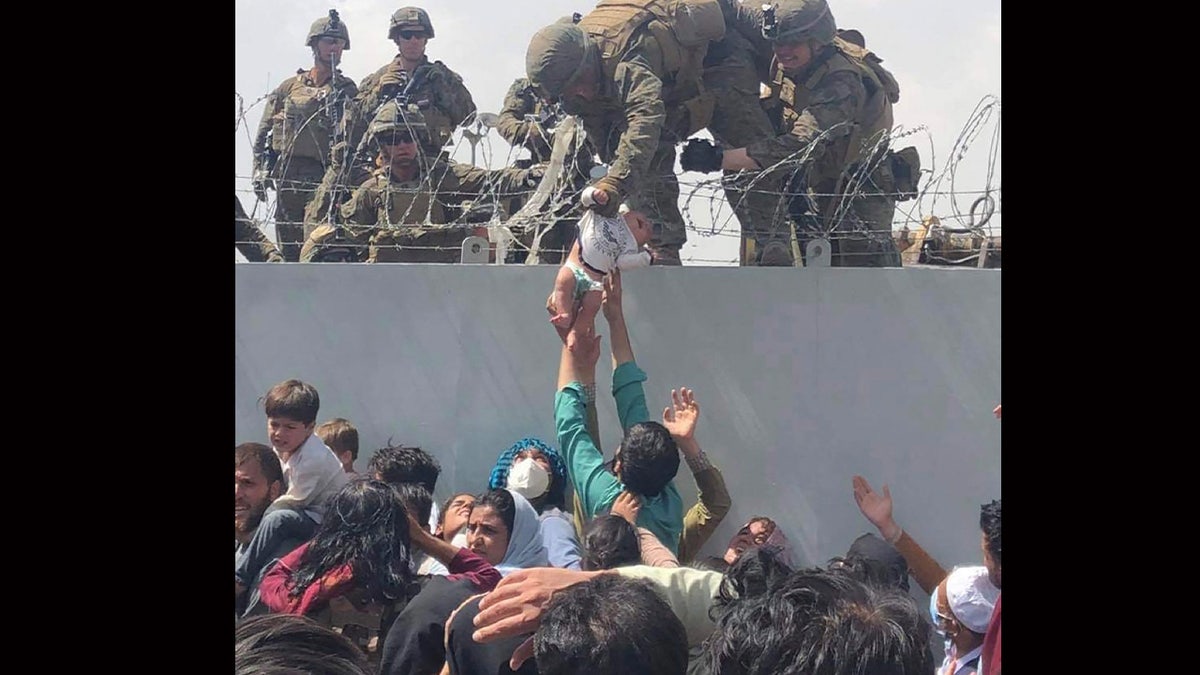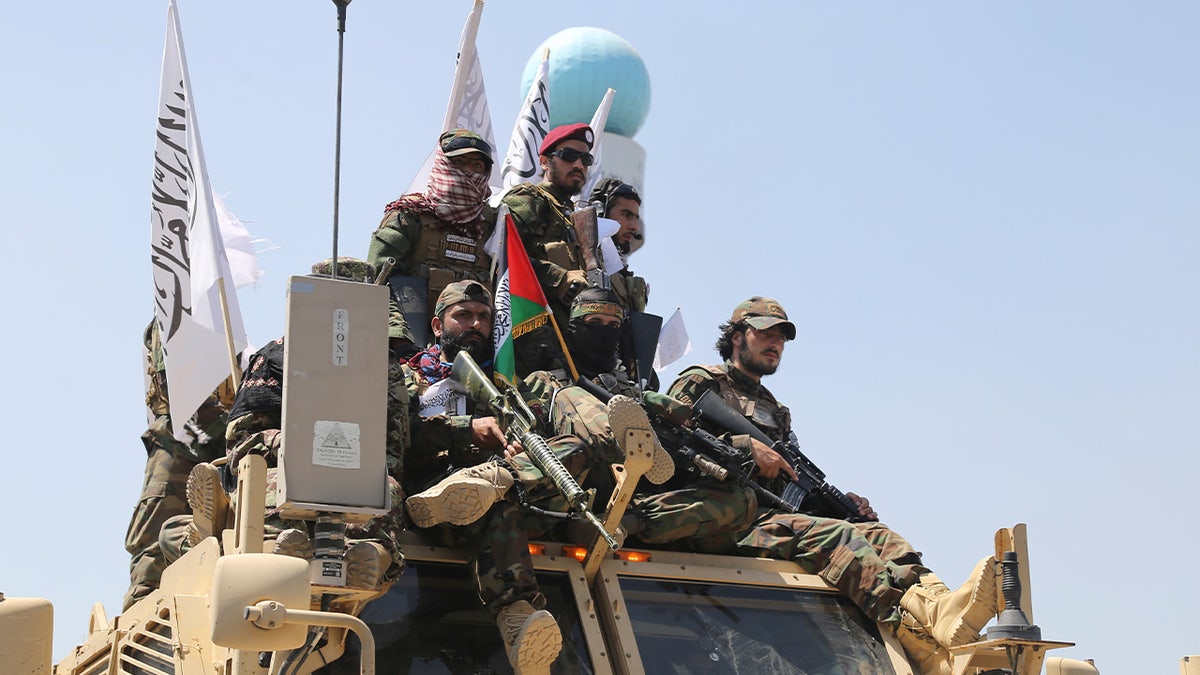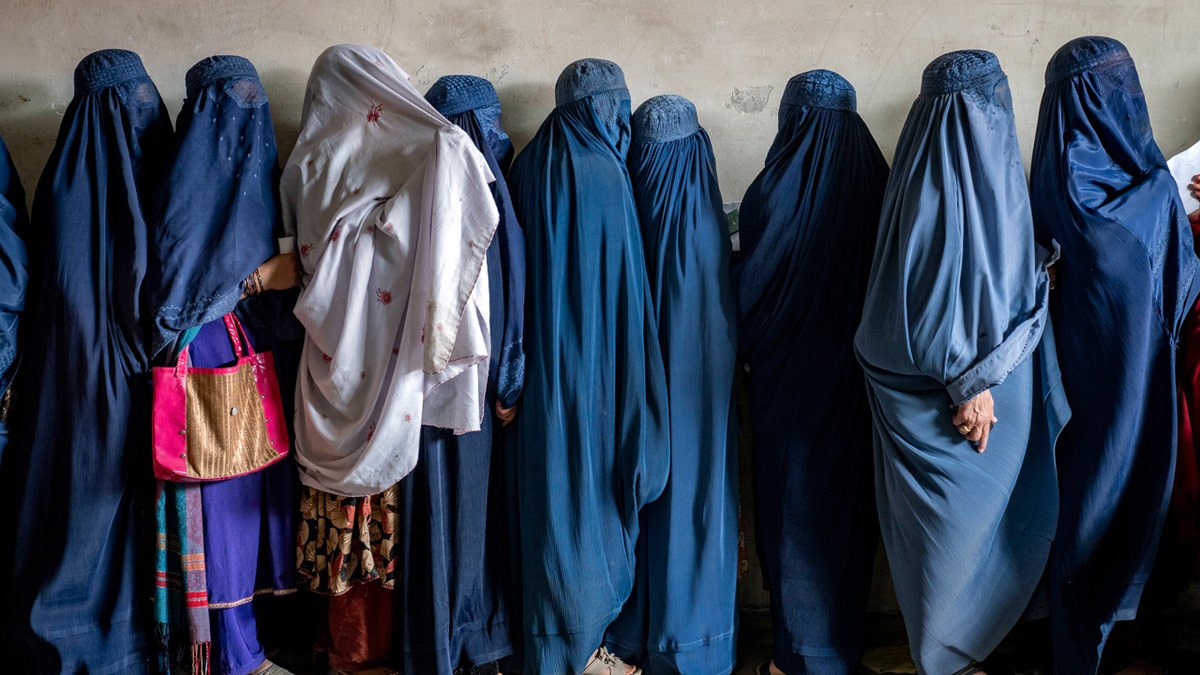Former Afghan Army Lt. Gen. Sami Sadat says Afghanistan is a 'crucible of terrorism'
Former Afghan Army Lt. Gen. Sami Sadat says Afghanistan has become a 'crucible of terrorism' following the US withdrawal and the immediate Taliban takeover, which ultimately has made the country a safe haven for al Qaeda.
Texas Rep. Mike McCaul, the Republican chair of the House Foreign Affairs Committee, released a scathing report that took a fine-toothed comb to the military's botched 2021 Afghanistan withdrawal and highlighted areas of serious mismanagement.
The Republican-led report opens by harkening back to President Joe Biden’s urgency to withdraw from the Vietnam War as a senator in the 1970s. That, along with the Afghanistan withdrawal, demonstrates a "pattern of callous foreign policy positions and readiness to abandon strategic partners," according to the report.
The report also disputed Biden's assertion that his hands were tied to the Doha agreement former President Trump had made with the Taliban establishing a deadline for U.S. withdrawal for the summer of 2021, and it revealed how state officials had no plan for getting Americans and allies out while there were still troops there to protect them.

A U.S. Marine grabs an infant over a fence of barbed wire during an evacuation at then-Hamid Karzai International Airport in Kabul on Aug. 19, 2021. (Omar Haidiri/AFP via Getty Images)
Here's a roundup of the findings of the more than 350-page report, comprised of tens of thousands of pages of documents and interviews with high-level officials that spanned much of the last two years:
Biden was not bound by deadlines in Trump's Doha agreement with Taliban
The report found that Biden and Vice President Harris were advised by top leaders that the Taliban were already in violation of the conditions of the Doha agreement and, therefore, the U.S. was not obligated to leave.
HOUSE COMMITTEE SUBPOENAS BLINKEN OVER AFGHANISTAN WITHDRAWAL
The committee also found NATO allies had expressed their vehement opposition to the U.S. decision to withdraw. The British Chief of the Defense staff warned that "withdrawal under these circumstances would be perceived as a strategic victory for the Taliban."
Biden kept on Zalmay Khalilzad, a Trump appointee who negotiated the agreement, as special representative to Afghanistan – a signal that the new administration endorsed the deal.
At the Taliban’s demand, Khalilzad had shut out the Afghan government from the talks – a major blow to President Ashraf Ghani’s government.
When Trump left office, some 2,500 U.S. troops remained in Afghanistan. Biden himself was determined to draw that number to zero no matter what, according to Col. Seth Krummrich, chief of staff for Special Operations Command, who told the committee, "The president decided we’re going to leave, and he’s not listening to anybody."
Then-State Dept. spokesperson Ned Price admitted in testimony the Doha agreement was "immaterial" to Biden’s decision to withdraw.

Taliban fighters celebrate the third anniversary of the withdrawal of U.S.-led troops from Afghanistan in Kabul last month. (AP Photo/Siddiqullah Alizai)
The withdrawal: State Department built up personnel, failed to hatch escape plan as it became clear Kabul would fall
The report also details numerous warning signs the State Department received to draw down its embassy footprint as it became clear Afghanistan would quickly fall to the Taliban. It refused to do so. At the time of the withdrawal, it was one of the largest embassies in the world.
In the end, Americans and U.S. allies were left stranded as the military was ordered to withdraw before the embassy had shuttered.
In one meeting, Deputy Secretary of State for Management and Resources Brian McKeon rejected military officials’ warnings, saying "we at the State Department have a much higher risk tolerance than you guys."
Gen. Austin Miler, the longest-serving commander in Afghanistan, confirmed McKeon’s comments and explained that the State Department did not have a higher risk tolerance but instead exhibited "a lack of understanding of the risk" in Afghanistan.
Asked why McKeon would make such statements, the officer explained, "The State Department and the president were saying it. Consequently, [Wilson] and others start saying it, thinking that they will make it work."
The report lays blame on former Afghanistan Ambassador Ross Wilson, who instead of shrinking, grew the embassy’s presence as the security situation deteriorated.
Revealing little sense of urgency, Wilson was on a two-week vacation on the last week of July and the first week of August 2021.

The Taliban Virtue and Vice Ministry on May 7, 2022, said women in public must wear all-encompassing robes and cover their faces, except for their eyes. (AP Photo/Ebrahim Noroozi)
An NEO, a noncombatant evacuation operation to get personnel out, was not ordered until Aug. 15 as the Taliban marched into Kabul.
There weren’t enough troops present to begin the NEO until Aug. 19, and the first public message from the embassy in Kabul urging Americans to evacuate wasn’t sent until Aug. 7.
And while there weren't enough military planes to handle the evacuations, it took the Transportation Department until Aug. 20 to allow foreign planes to assist.
Wilson fled the embassy ahead of his entire embassy staff, the report found. He reportedly had COVID-19 at the time but got a foreign service officer to take his test for him so that he could flee the country.
Acting Under Secretary Carol Perez told the committee the embassy’s evacuation plan was "still in the works" when the Taliban took over, despite months of warning.
Those left behind: Americans and allies turned away while unvetted Afghans got on flights
Wilson testified that he was "comfortable" with holding off on the NEO until Aug. 15, while Gen. Frank McKenzie described it as the "fatal flaw that created what happened in August."
As the Taliban surrounded Kabul on Aug. 14, notes obtained by the committee from a National Security Counsel (NSC) meeting reveal the U.S. government still had not determined who would be eligible for evacuation nor had they identified third countries to serve as transit points for an evacuation.
Fewer cases for special immigrant visas (SIVs) to evacuate Afghan U.S. military allies like interpreters were processed in June, July and August – the lead-up to the takeover – than the four months prior.
When the last U.S. military flight departed Kabul, around 1,000 Americans were left on the ground, as were more than 90% of SIV-eligible Afghans.
The report found that local embassy employees had been de-prioritized for evacuation, with many turned away from the embassy and airport in tears. On the day of the Taliban takeover, the U.S.’ only guidance for those who might be eligible for evacuation was to "not travel to the airport until you have been informed by email that departure options exist."
And since the NSC did not send over guidelines for who was eligible for evacuation and who to prioritize because they were "at risk," the State Department processed thousands of evacuees with no documentation.
The U.S. government had "no idea if people being evacuated were threats," one State Department employee told the committee.
After the final troops left Afghanistan, volunteer groups helped at least 314 American citizens and 266 lawful permanent residents evacuate the country.
Scenes at Abbey Gate: Terror threat warnings unheeded before bombing
And as the Taliban whipped groups of desperate Afghans at the airport, burned young women and executed civilians, U.S. troops were forbidden from intervening.
Consul General Jim DeHart described the scene as "apocalyptic."
U.S. intelligence, meanwhile, was tracking multiple threat streams, including "a potential VBIED or suicide vest IED as part of a complex attack," by Aug. 23. By Aug. 26, the threat was specifically narrowed down to Abbey Gate. It was so serious that diplomatic security pulled back state employees from the gate.
Brig. Gen. Farrell Sullivan ultimately decided to keep the gate open in the face of the threats due to requests made by the Brits.
AFGHAN GENERAL SAYS HIS COUNTRY HAS ONCE AGAIN BECOME ‘CRUCIBLE OF TERRORISM’
And on Aug. 26, two bombs planted by terror group ISIS-K exploded at the airport, killing 13 U.S. service members and more than 150 Afghans. CENTCOM records revealed the same ISIS-K terror cell that conducted the Abbey Gate attack "established a base of operations located six kilometers to the west" of the airport in a neighborhood previously used by them as a staging area for an attack on the airport in December 2020. But the U.S. did not strike this cell before the bombing.
Two weeks later, an airstrike intending to kill those behind the ISIS-K instead killed 10 civilians. The administration initially touted the strike as a success of over-the-horizon capabilities before acknowledging a family of civilians had been killed.
The U.S. has not struck ISIS-K in Afghanistan since – in stark contrast to the 313 operations carried out by CENTCOM against ISIS in Iraq and Syria in 2022.

U.S. service members assist the Department of State with a non-combatant evacuation operation in Afghanistan. (Department of Defense)
The long-term consequences
In addition to the $7 billion in abandoned U.S. weapons, the Taliban likely gained access to up to $57 million in U.S. funds that were initially given to the Afghan government.
The Taliban’s interior minister, Sirajuddin Haqqani, proclaimed in February 2024 that relations with the rest of the world, especially the U.S., are "irrelevant" to its policymaking.
A NATO report written by the Defence Education Enhancement Programme found the Taliban was using U.S. military biometric devices and databases to hunt down U.S. Afghan allies.
And in the first six months of Taliban power, "nearly 500 former government officials and members of the Afghan security forces were killed or forcibly disappeared," according to the report.
CLICK HERE TO GET THE FOX NEWS APP
Some 118 girls have been sold as child brides since the takeover and 116 families are waiting for a buyer. Women are now banned from speaking or showing their faces in public.
In June 2024, the Department of Homeland Security identified more than 400 persons of interest from Central Asia who had illegally crossed the U.S. southern border with the help of an ISIS-related smuggling network. The U.S. has since arrested more than 150 of these individuals. On June 11, 2024, the FBI arrested eight people with ties to ISIS-K who had crossed through the southern border.
State Department spokesman Matt Miller released a statement regarding the report saying, "The President acted in the best interests of the American people when he ended America’s longest war. This decision ensured another generation of Americans would not fight and die in Afghanistan, while putting the United States in a stronger position to face challenges to national security and international stability. It remains deeply disappointing that House Foreign Affairs Committee Republicans used this process to politicize Afghanistan policy instead of working on legislative solutions to strengthen our country. They have done a disservice by relying on false information and presenting inaccurate narratives meant only to harm the Administration, instead of seeking to actually inform Americans on how our longest war came to an end. The State Department remains immensely proud of its workforce who put themselves forward in the waning days of our presence in Afghanistan to evacuate both Americans and the brave Afghans who stood by over sides for more than two decades."






















